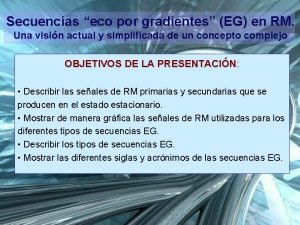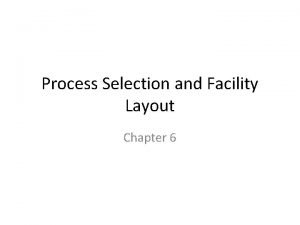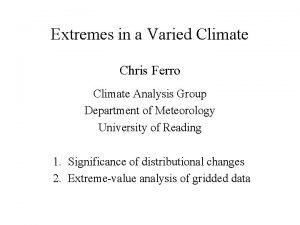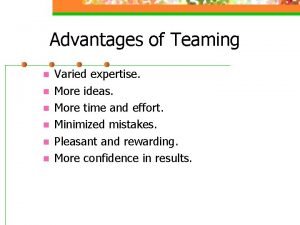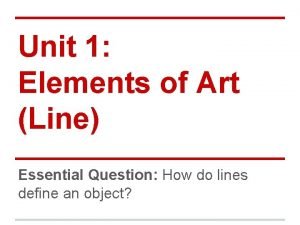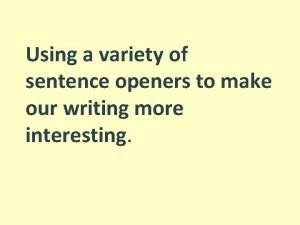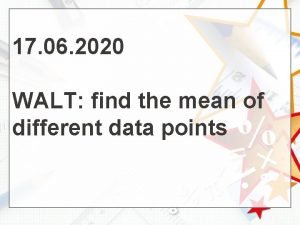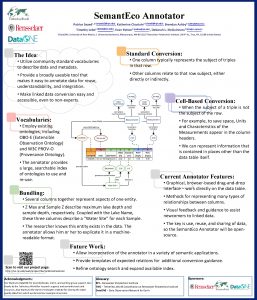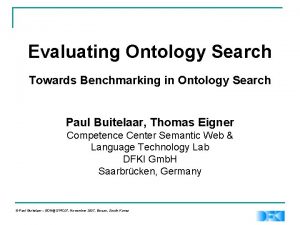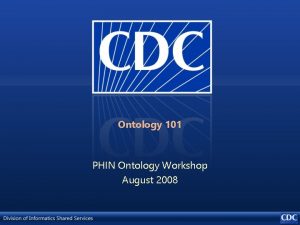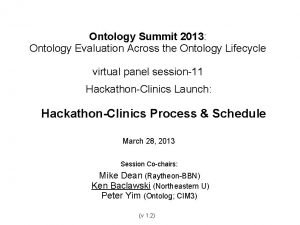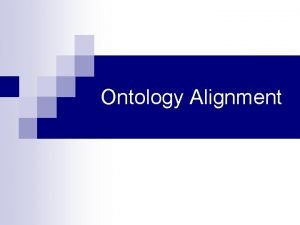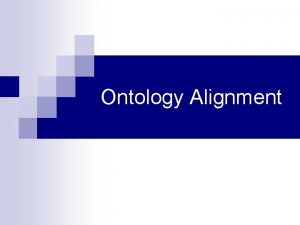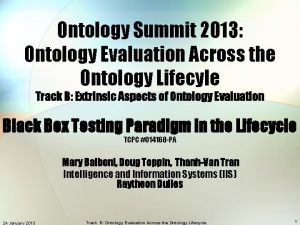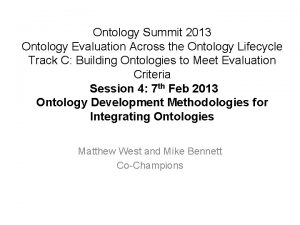Hierarchical Search in Semant Eco Support Varied Ontology










- Slides: 10

Hierarchical Search in Semant. Eco Support Varied Ontology Design Patterns Session: "Semantics for Biodiversity: Interoperability with genomic and ecological semantics" Patrice Seyed, Evan Patton, and Deborah Mc. Guinness (presented by Nathan Wilson)

Introduction • Multiple ontology design patterns for modeling taxonomic classification • Vertebrate Taxonomy Ontology (VTO) – Taxons are represented as classes • ‘Ictaluridae Sub. Class. Of Siluriformes’ • Phenoscape Ontology – Taxa as Individuals • ‘Ictaluridae subclade_of Siluriformes’ • Population thinking, inference of up-propagation from descendent species populations to ancestors • ‘contains_clade o has_member -> has_member’ – A DL description of a clade is propagated up the clade taxonomy

Semant. Eco Modular Framework and the Hierarchical Search Component – Adheres to model-view-controller software architecture pattern • separation between the underlying representation and that which is presented to the user – Allowing support of varied Knowledge Representation design patterns – Supports user interface rendering for navigation along different axes (e. g. , generalization, partonomic, taxonomic)

Semant. Eco Module Framework and the Hierarchical Search Component • Semant. Eco module designers can provide custom hierarchical search facets. • Enable flexible navigation of resources via their relationships to others, to providing users with multiple paths for finding data. • Leverages Java. Script Trees library (JSTrees) • Each node maps to an RDF Resource, and the selection of a node triggers construction/execution of a SPARQL pattern for rendering immediate children nodes • A SPARQL query pattern is provided by a module designer along the axes of interest for hierarchical navigation, for retrieving a tree’s root and children nodes. • A data-level SPARQL pattern for search using tree selections is ultimately composed in conjunction

Flow • Client interface selection maps to REST-ful web request • Server side SPARQL Query executed, results to client as JSON

Phenoscape Faceted App

SPARQL Query for “Roots” prefix pheno: <http: //vocab. phenoscape. org/> select DISTINCT ? child ? parent where { graph <http: //phenoscape-example>{ ? child pheno: subclade_of ? parent. FILTER NOT EXISTS { ? parent pheno: subclade_of ? z } } }

SPARQL Query for “Children” prefix pheno: <http: //vocab. phenoscape. org/> select DISTINCT ? child ? parent where { graph <http: //phenoscape-example>{ ? child pheno: subclade_of <Client selection URI>. } }

Conclusions • Enables one to develop ontologies and semantic web applications independently • Either conceptualization described above for taxon modeling can be leveraged in the Hierarchical Search Facet component with the appropriate supporting SPARQL queries in place. • This suits our immediate needs for semantic search in Semant. Eco as a portal and as an architecture, for a semantically-enabled monitoring environment it supports flexible search backed by semantics.

References • http: //phenoscape. org/wiki/Individual-based_taxonomy • James P. Balhoff, Peter E. Midford, Hilmar Lapp: Integrating Anatomy and Phenotype Ontologies with Taxonomic Hierarchies. International Conference on Biomedical Ontologies, Buffalo, NY 2011
 Spin eco y eco gradiente
Spin eco y eco gradiente Layouts that can handle varied processing requirements
Layouts that can handle varied processing requirements Varied climate
Varied climate Coincidence in a sentence
Coincidence in a sentence Varied expertise
Varied expertise Outline vs contour line
Outline vs contour line Ing sentence starters
Ing sentence starters What does varied fluency mean
What does varied fluency mean Interesting sentence openers
Interesting sentence openers A healthful diet is adequate moderate balanced varied and
A healthful diet is adequate moderate balanced varied and Signal words
Signal words
